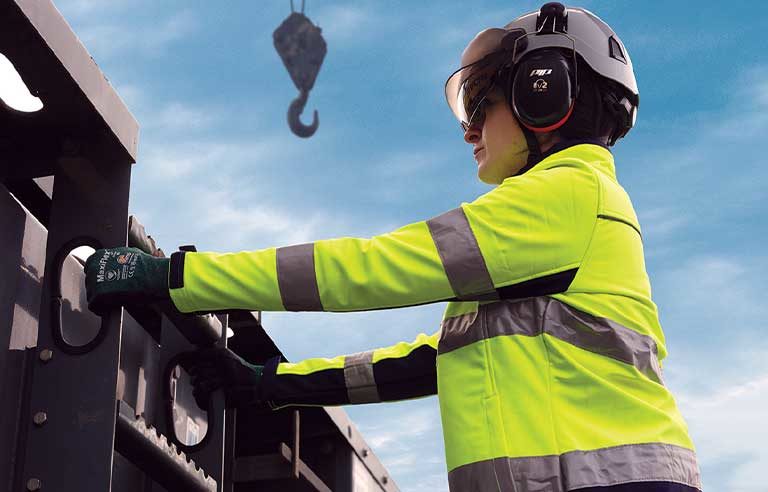Protect outdoor workers
What do we need to consider when choosing high-visibility multi-season workwear?

Responding is Jim Huebner, marketing manager – construction, Protective Industrial Products, Latham, NY.
Winter and spring can be hazardous times of the year for outdoor workers. That’s why employers must educate their employees on how to stay safe – while also providing them with the proper high-visibility workwear to keep them protected. With so many options available, finding the best ones can be challenging. Understanding the most critical factors influencing user satisfaction can simplify the process.
Safety. To ensure the highest level of safety, it’s important to pay close attention to the amount and placement of reflective tape on the garment. ANSI standards for high-visibility work apparel provide requirements intended to keep workers safe in different environments. They range from ANSI Class 1 (low risk) to ANSI Class 3 (high risk).
The risk of sunburn is still present in the winter and spring months, so fabrics that incorporate an ultraviolet protection factor help protect the wearer by blocking dangerous UV rays from the sun. You’ll often see ratings of UPF 30, 50 and 50-plus, which indicate the amount of UV transmission that the garment permits. Additionally, wet garments contribute to heat loss, so finding workwear with a high waterproof rating is critical to better protect workers from the elements and help them stay warm longer.
Durability. Long shifts and constant movement mean workwear will take a beating. Although cost savings are often preferred, finding the most economical option isn’t always in the best interest of the worker because the garment must be durable enough to withstand rigorous environments. Quality materials should be considered first, as replacement costs can exceed the initial investment in higher quality gear. Additionally, features such as double stitching on high-stress areas will contribute to a longer wear life.
Functionality. Covers and zippers prevent water and snow from filling up pockets, which introduces moisture to the interior of the jacket and contributes to heat loss. It also helps prevent objects from falling out and potentially injuring people or property below when working at height.
Comfort. As mentioned before, purchasers typically look toward price as the main driving force when choosing personal protective equipment to outfit workers. However, they often forget that comfort is another critical factor that needs to be considered. When workwear is uncomfortable, voluntary compliance is much more challenging to accomplish and it puts workers at risk.
Demanding work can cause overheating in both hot and cold environments. When workwear lacks breathability, workers tend to remove garments to cool off, which exposes them to the elements, further putting them at risk for injury. Other features such as segmented tape give workers a better range of movement. Fleece-lined pockets provide a warm place to rest hands in between jobs, and make inserting and removing hands from pockets easier.
Workwear that’s unnecessarily heavy intensifies the physical demands of a job. It’s important to invest in lightweight winter workwear that reduces fatigue and stress on workers while still providing an optimal level of protection in the cold.
The look and feel of PPE, including high-visibility multi-season workwear, has become more critical than ever. Today’s workers want to look and feel just as good at work as they do at home. Employers who want to increase their chances of employees complying with PPE requirements must consider that when choosing how to outfit their crews.
Before making your next workwear purchase, consider how safety, durability, functionality and comfort can increase voluntary compliance and protect the livelihood of your workers.
Editor's note: This article represents the independent views of the author and should not be considered a National Safety Council endorsement.
Post a comment to this article
Safety+Health welcomes comments that promote respectful dialogue. Please stay on topic. Comments that contain personal attacks, profanity or abusive language – or those aggressively promoting products or services – will be removed. We reserve the right to determine which comments violate our comment policy. (Anonymous comments are welcome; merely skip the “name” field in the comment box. An email address is required but will not be included with your comment.)

